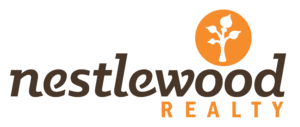Choosing Between a Fixed-Rate Loan and an Adjustable-Rate Loan
Should I get a fixed-rate loan or an adjustable-rate loan?
You’re excited to find the perfect home that fits your lifestyle, family, and aesthetic, but the hardest part of the home-finding process is the home-buying process. To make your journey to your new home easier, we want to break down two of the most popular loan types and help you find which is best for you.
Two of the most popular loan types are fixed-rate loans and adjustable-rate loans. Fixed-rate loans have the same interest rate locked in for the life of the loan. Adjustable-rate loans lock in an introductory interest rate for the first few years and they can fluctuate depending on outside factors throughout the life of the loan.
So which one is right for you?

If you have the income to support unpredictable changes, you could end up saving money with your adjustable-rate loan if your interest rate drops. However, if your interest rate goes up, so will your monthly payment.
If paying more than you can afford doesn’t sound like something you’re willing or able to do, a fixed-rate loan might be the safer bet because an adjustable-rate loan will fluctuate. With a fixed-rate loan, monthly payments will not change due to fluctuating interest rates and you can easily budget for your monthly bill.
There is also safety in knowing you can refinance your fixed-rate loan in the future. The value of your home, your credit score, accumulating too much debt and losing some of your income can affect whether or not you are able to refinance an adjustable-rate loan. If your home value drops too much or your credit score takes a hit, you may be denied the ability to refinance for a lower interest rate. (This was part of the cause of the mortgage crisis of 2008-2009!)
But be careful, you have to pay for safety. Fixed-rate loans typically start out with higher interest rates than variable-rate (or adjustable-rate) loans. For example, the rate on a fixed-rate mortgage might be one or two percent higher than the rate on an adjustable-rate mortgage (ARM). That difference can make a dramatic change in your monthly payment.
If you know you are going to move before your ARM adjusts, then getting an ARM makes sense. The number one reason Millenials and Generation Z moves is a change of employment with an increase in pay. Millennial job habits commonly include changing jobs within two years. With mobility being a growing trend, then having a long-term, fixed-rate loan may not be desirable. The key is to not catch yourself in a buyer’s market with home prices on the decline. You may end up being forced to sell for a lower price than you would want, due to your need to move.
At the same time, fixed-rate loans are available in a variety of yearly terms and the shorter the term of your loan, the lower the interest rate will be. This means you’ll end up paying less in interest altogether and you will build equity and own your home sooner. But remember: The shorter the loan period is, the higher the monthly payments will be.
A standard 30-year fixed rate mortgage is traditionally the most common way to buy a home. But the Washington Post reported that more homebuyers are turning to adjustable-rate mortgages because of the low initial rate of an ARM.
In the end, there are pros and cons for each type of loan. Before you make a decision, seek advice from an expert– like one of our agents, who will be able to help you choose between a fixed and adjustable-rate loan.
